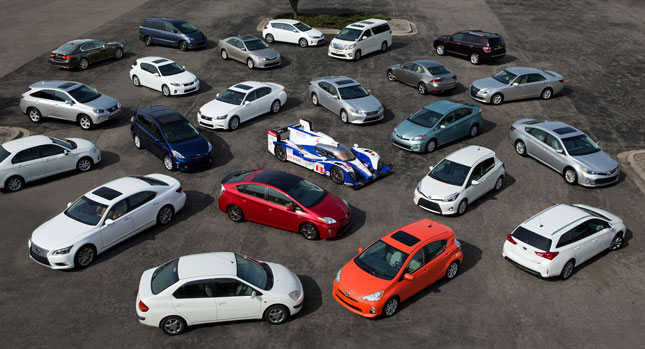Close to two decades ago (a concept was presented in 1995, and the production car followed in 1997), Toyota launched what was largely considered at the time as an geeky experiment for a hybrid model using both an internal combustion engine and an electric motor for its motivation, the Prius. Today, most automakers are following in its footsteps – even supercar brands like Ferrari have employed the technology in their vehicles.
Now, the Prius is currently in its third iteration with Toyota actively developing its successor that will launch in 2015. While it’s too early for Toyota to tease the appearance of the next Prius, the Japanese carmaker has outlined technical details and even targets for fuel economy, with the company stating that it expects to continue its practice of reducing fuel economy by around 10 percent with each new generation of the Prius.
“The current Prius has held America’s fuel economy crown for many years,” said Toyota Motor Corporation (TMC) Managing Officer Satoshi Ogiso. “In its three generations, Prius MPG has improved on average by about 10 percent, each generation. The challenge to continue to improve at this rate — to beat your own record — becomes very difficult, but makes it all the more motivating. We are very motivated to beat our record.”
To reach that goal, the new Prius will come with advances in battery, electric motor and petrol engine technology, all components of which will be smaller, lighter and more efficient. One example is the new electric motors that will be smaller in size, but with a higher power density. “The motors in the current model have four times the power density of those used by the original Prius back in 1999, and the improvement will be higher still in the next generation car,” said Toyota.
Furthermore, the thermal efficiency of the new petrol engine will improve from 38.5 percent currently, to more than 40 per cent, which the Japanese carmaker says will be a “world-best”. The new Prius’ improved aerodynamics will also contribute to better fuel economy numbers.
Under the skin, the 2015 Prius will ride on the new Toyota New Global Architecture, featuring a lower center of gravity and stronger structure, with the automaker promising improved dynamic performance as well.
Osigo added that the new Prius will have a roomier interior and significant refinements in design, layout and ease of operation.
For the first time, Toyota is developing in parallel two variants of the Prius, the regular hybrid and a plug-in hybrid version, with the latter to offer a new wireless/inductive charging system that discards cables – at least at home.
“We have been listening very carefully to Prius PHV owners and are considering their requests for additional all-electric range,” said Osigo. “We have also heard from owners that they would like a more convenient charging operation. In response, we are developing a new wireless/inductive charging system that produces resonance between an on-floor coil and an onboard coil to transmit power to the battery, providing charging without the fuss of a cable.”
Osigo said verification work on the system will be done in Japan, the U.S. and Europe starting from next year.
Naturally, the same technologies being developed for the 2015 Prius will eventually be used in other Toyota and Lexus branded models. The Japanese company noted that between now and the end of 2015, it will introduce 15 new or redesigned hybrid vehicles globally.
Video Credits: KGP Photography/YouTube
PHOTO GALLERY









